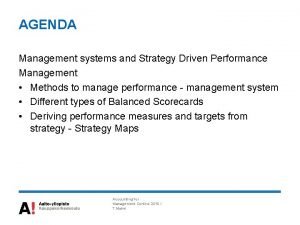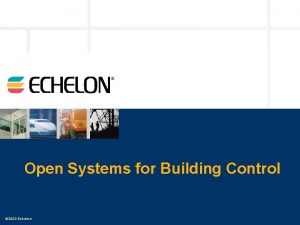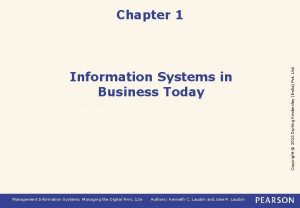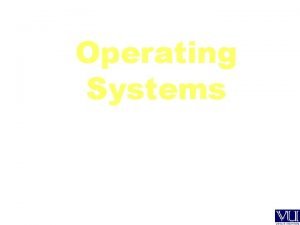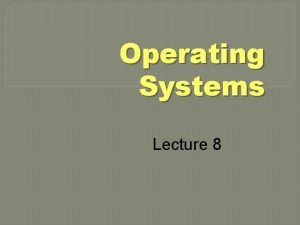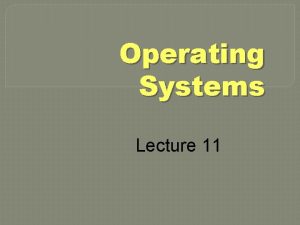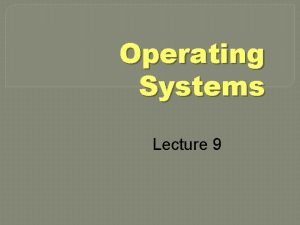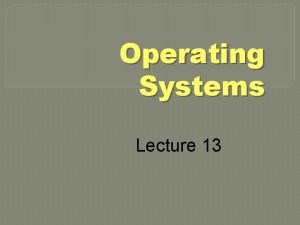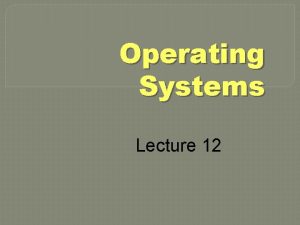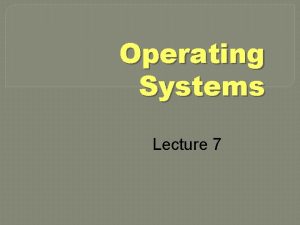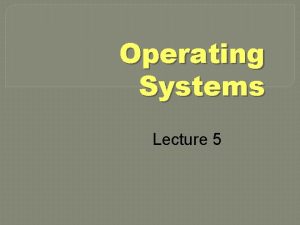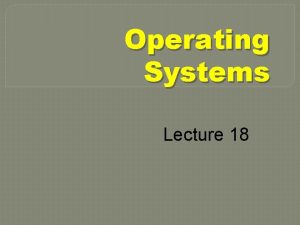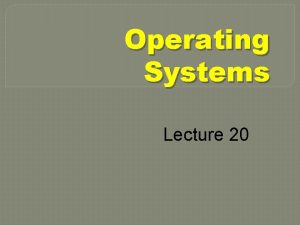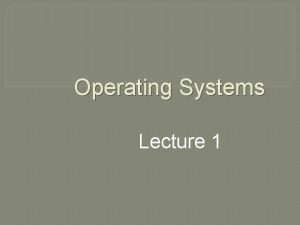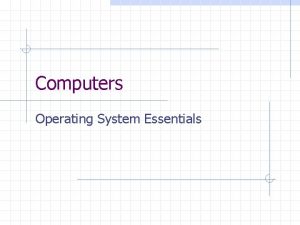Operating Systems Lecture 17 Agenda for Today n
















- Slides: 16

Operating Systems Lecture 17

Agenda for Today n Review of previous lecture n Multi-level queues scheduling n Multi-level feedback queues scheduling n UNIX System V scheduling n Algorithm evaluation n Recap of lecture

Review of Lecture 16 n Shortest-Job-First is optimal n Round-Robin scheduling n Multi-level queues scheduling

Multilevel Queues

Multilevel Feedback Queues § A process can move between the various queues; aging can be implemented this way. § Multilevel-feedback-queue scheduler defined by the following parameters: § Number of queues § Scheduling algorithms for each queue

Multilevel Feedback Queues § Method used to determine when to upgrade a process § Method used to determine when to demote a process § Method used to determine which queue a process will enter when that process needs service

Multilevel Feedback Queues

UNIX System V Scheduling Algorithm Multilevel feedback priority queues with round robin within each queue § Quantum = 1 second § Priorities are divided into two groups/bands: § Kernel Group § User Group §

UNIX System V Scheduling Algorithm § Priorities in the Kernel Group are assigned in a manner to minimize bottlenecks: processes waiting in a lower-level routine get higher priorities than those waiting at relatively higher-level routines.

UNIX System V Scheduling Algorithm § In decreasing order of priority, the bands are: § Swapper § Block I/O device control processes § File manipulation § Character I/O device control processes § User processes

UNIX System V Scheduling Algorithm Priorities of processes in the Kernel Group remain fixed. § Priorities of processes in the User Group are recalculated every second. § Inside the User Group, the CPUbound processes are penalized at the expense of I/O-bound processes §

UNIX System V Scheduling Algorithm

UNIX System V Scheduling Algorithm § § § The CPU usage of each process is updated every clock tick by the clock ISR. Every second, a decay function is applied to the CPU usage of each process in the ready queue: Decay (CPU Usage)=(CPU Usage)/2 Priority number of each process is recomputed every second

UNIX System V Scheduling Algorithm § Every second, the priority number of all those processes that are in the main memory and ready to run is updated by using the following formula: Priority# = (Recent CPU Usage)/2 + Thr. Pri. + nice § Threshold priority and nice values are always positive to prevent a user from migrating out of its assigned group

UNIX System V Example PA Time Priority PB CPU Count 0 60 1 75 0 1 … 60 30 67 30 15 2 3 63 4 76 7 8 … 67 33 5 68 16 PC Priority CPU Count 60 0 60 75 0 1 … 60 30 67 30 15 76 63 7 8 … 67 33 Priority CPU Count 60 0 60 75 0 1 … 60 30 67 30 15 63 7

Recap of Lecture n Multi-level queues scheduling n Multi-level feedback queues scheduling n UNIX System V scheduling
 Operating system lecture notes
Operating system lecture notes 01:640:244 lecture notes - lecture 15: plat, idah, farad
01:640:244 lecture notes - lecture 15: plat, idah, farad Agenda sistemica y agenda institucional
Agenda sistemica y agenda institucional Agenda for today
Agenda for today Today meeting or today's meeting
Today meeting or today's meeting Are you going to class today
Are you going to class today Today meeting or today's meeting
Today meeting or today's meeting Fingerprint ridge characteristics worksheet
Fingerprint ridge characteristics worksheet Today's lesson or today lesson
Today's lesson or today lesson Example of repitition
Example of repitition Articulators
Articulators Lecture sound systems
Lecture sound systems Agenda management systems
Agenda management systems Agenda open systems
Agenda open systems Survival in information system
Survival in information system Information systems in global business today
Information systems in global business today Information system in global business today
Information system in global business today












